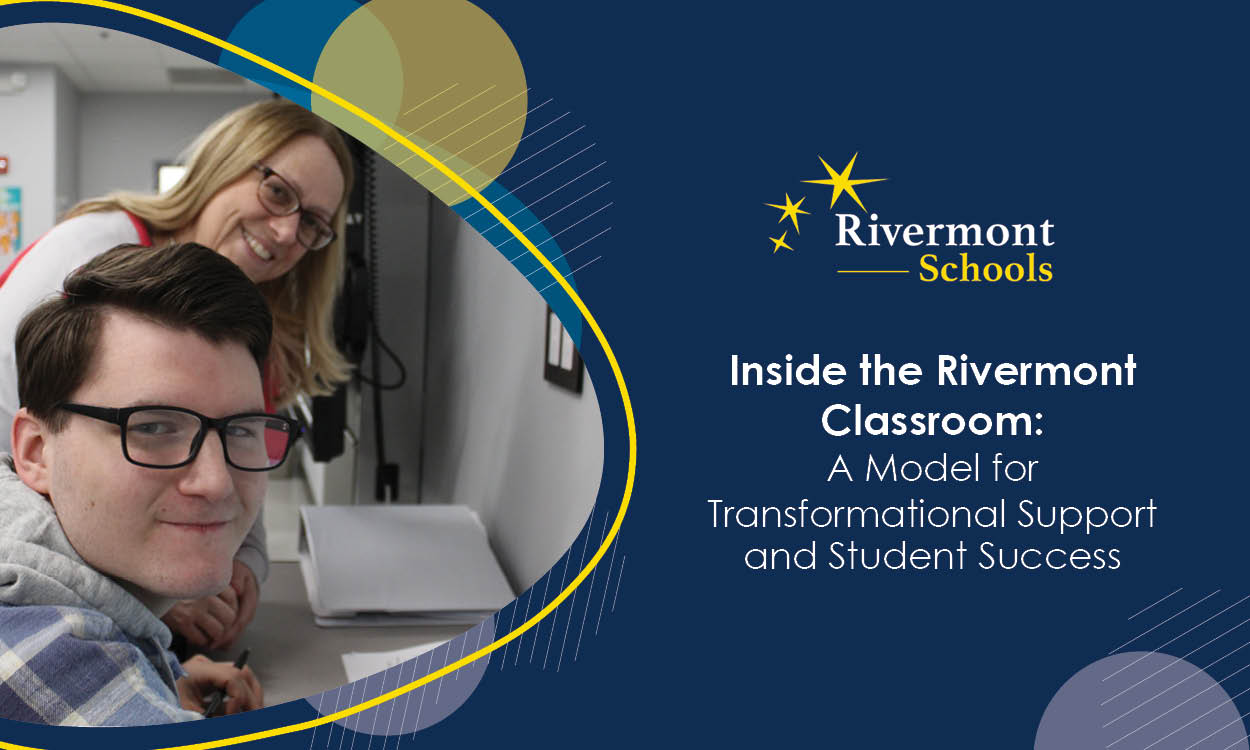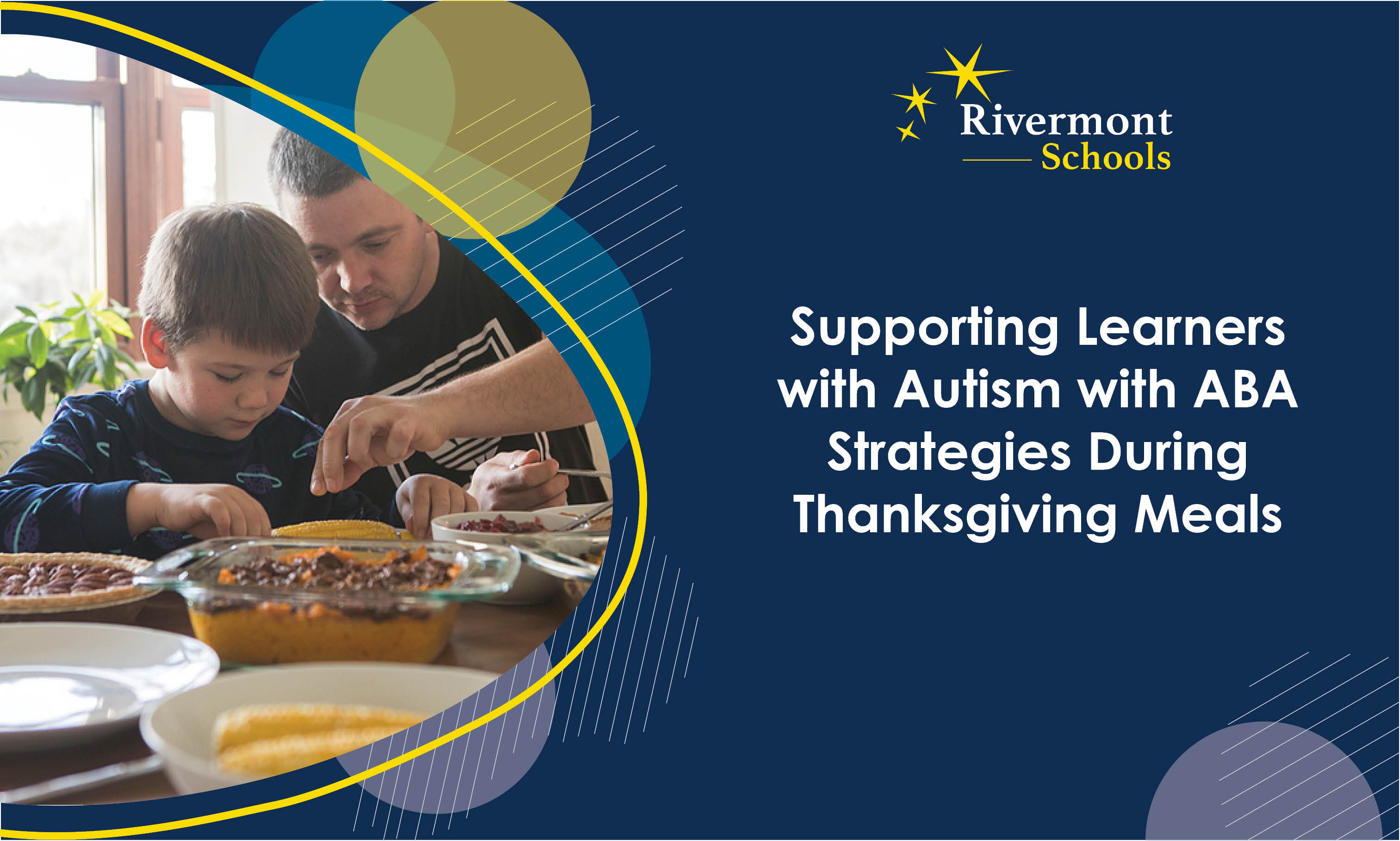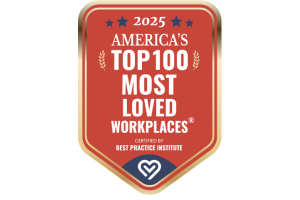Inside the Rivermont Classroom: A Model for Transformational Support and Student Success
Posted: August 21, 2025 | Written By: Jennifer Younger | Category:

Written by Jennifer Younger, Vice President of Behavioral Services, Rivermont Schools
The transformation seen in students at Rivermont Schools begins with a classroom model that is structured, responsive, and grounded in evidence-based practices. Designed to support each student’s academic, behavioral, and therapeutic development, Rivermont’s approach empowers both staff and students to succeed together.
A Unified Model for Diverse Learners
At Rivermont, the traditional divide between students with emotional-behavioral disorders and those with autism has been replaced with a unified approach to support. As Jennifer Younger, Vice President of Behavioral Services, explains, “We do not want to limit access to best practices based on disability, but rather provide students with targeted interventions based on their specific needs. For example, students with emotional needs can benefit from Applied Behavior Analysis (ABA) strategies, and students with autism can benefit from Positive Behavior Intervention and Supports.”
The result is a classroom support model driven by a multidisciplinary team comprised of behavioral, therapeutic, and clinical staff, who collaborate closely to meet each student’s unique needs. This team-based approach ensures students are supported holistically.
The Three P’s: Preventative, Proactive, Predictable
At the heart of Rivermont’s classroom approach is a guiding philosophy known as the Three P’s—Preventative, Proactive, and Predictable. This framework is more than a classroom management strategy; it’s a mindset that shapes how staff design learning environments and respond to student needs. By focusing on prevention rather than reaction, anticipating student challenges, and creating consistent expectations, the Three P’s help foster a sense of safety, structure, and trust.
Preventative: Staff scan the environment for triggers before behaviors arise.
Proactive: Teachers explicitly teach desired behaviors the same way they would academic content.
Predictable: Classrooms are structured with clear expectations and consistent routines, reducing anxiety and increasing engagement.
These practices are reinforced through our BARKS Matrix, a schoolwide behavior system inspired by our Bulldog mascot. Each letter in BARKS represents a core expectation: B (Be There, Be Ready), A (Accept Responsibility), R (Respect Self and Others), K (Individual Goal 1), and S (Individual Goal 2). By explicitly teaching and modeling these behaviors across settings, we create a consistent framework that allows students to practice positive behaviors in the classroom and transfer them successfully to real-world environments.
The Role of Behavioral Support Staff
Every Rivermont classroom features more than just a certified teacher. Supporting them are Mental Health Associates (MHAs), trained behavioral staff who specialize in data collection, observation, and intervention. “They’re there to drive student success,” Younger emphasizes.
MHAs write Student Support Plans, track behavioral goals, and use real-time observations to implement proactive strategies. For example, noticing a student tapping their foot, a signal of rising agitation, an MHA may step in and offer a break or redirection, preventing escalation. This type of preventative engagement is central to the Rivermont model.
For more insight into how an MHA supports their classroom, check out this blog.
Using Data to Drive Every Decision
From attendance to behavior to academic benchmarks, Rivermont uses data to inform and individualize support. Classrooms rely on daily point sheets that track behavior and performance, forming the foundation of each student’s support plan. These sheets not only communicate with families but also feed into a larger data system that informs decisions at the student, classroom, and school level.
Rivermont’s Tiered System of Support (RTSS) uses these data insights to identify students in need of small-group or intensive interventions. And when staff gather for their monthly Behavioral, Therapeutic, and Clinical (BTC) leadership meetings, they analyze dashboards to answer key questions: Which behaviors are trending? Where are incidents occurring? Are interventions working?
This data-driven culture ensures that interventions are rooted in need, tracked for impact, and refined for effectiveness. “It takes the guesswork and the bias out,” Younger notes. “We’re responding to students, not reacting.”
Incentives, Intrinsic Motivation, and Student Ownership
At Rivermont, positive reinforcement isn’t just a strategy; it’s part of who we are. Through our schoolwide BARKS expectations, students have the opportunity to earn Bulldog Bucks, which can be spent at the school store or used for special privileges. These systems make good behavior rewarding in the moment while also building habits that last. Ultimately, our goal is to help students transition from relying on external rewards to developing the intrinsic motivation to make positive choices on their own.
Students are also given tools to empower them to own their work and progress. From behavior tracking to academic journals, students monitor their own growth. This approach builds accountability and supports long-term development. “We want our students to be good citizens,” says Younger. “They live in our communities. They go to the same grocery stores. Our job is to prepare them for that life, not just for the classroom.”
Through its integrated, intentional classroom model, Rivermont Schools exemplifies what’s possible when behavioral science, clinical expertise, and high expectations come together in one learning environment. It’s not just about managing behavior; it’s about unlocking student potential.









